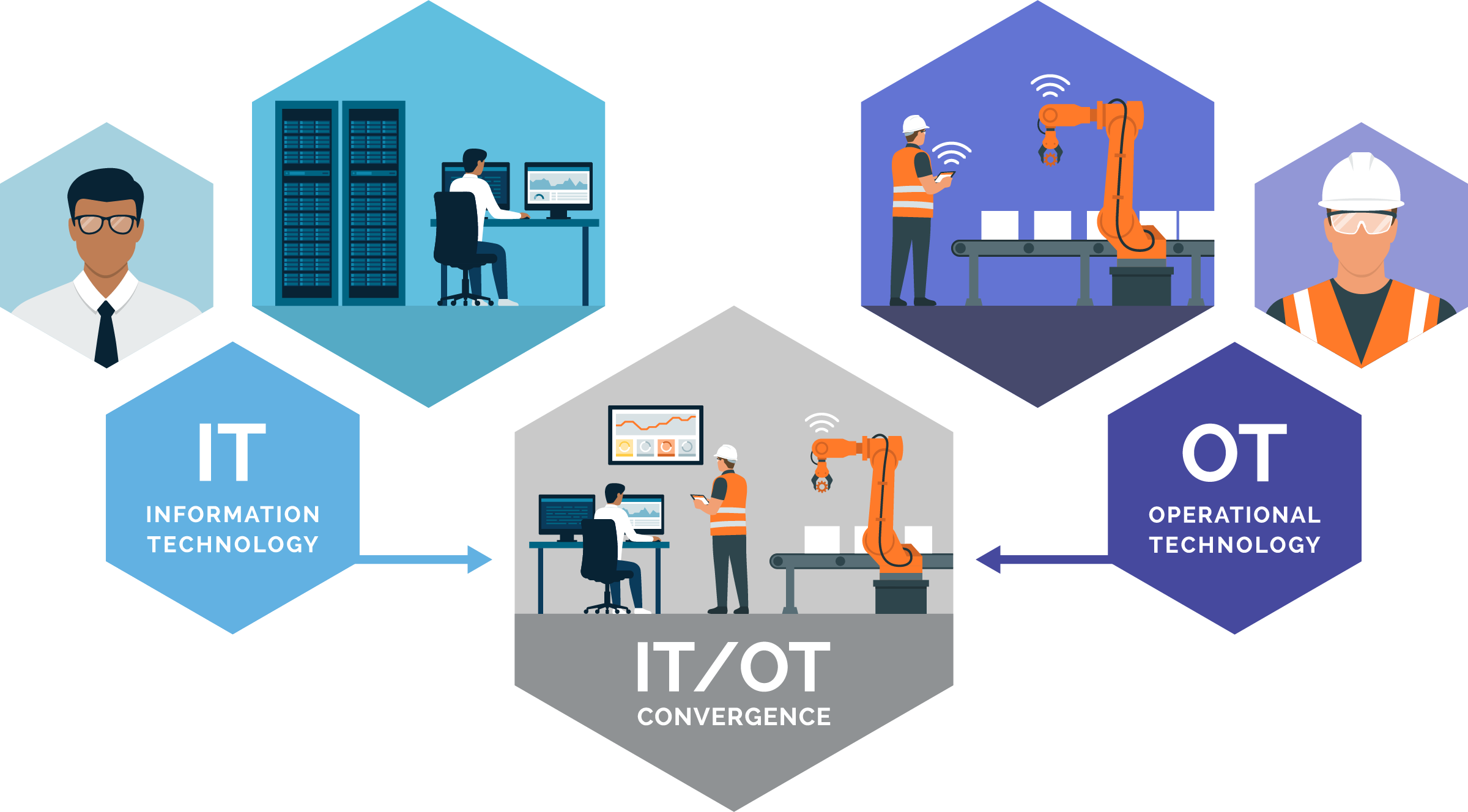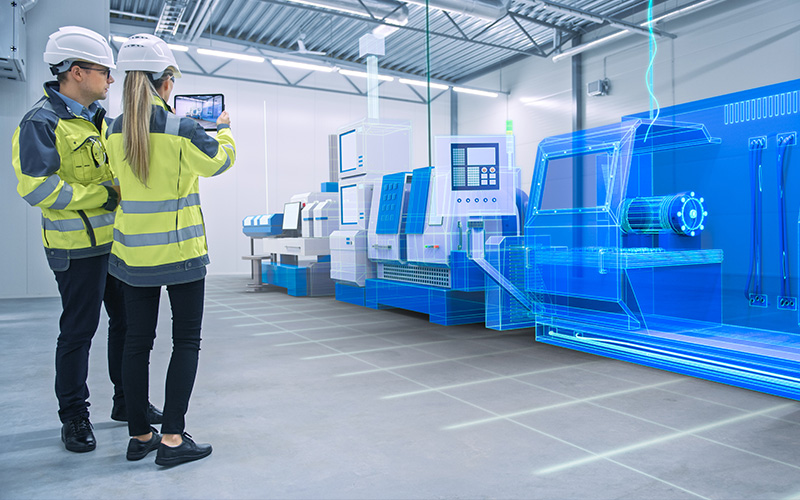Adapting to Industry 4.0 changes in operational technology (OT)
Dr Gary Allwood, Published: January 30, 2024 - Updated: January 30, 2024
As more industries look to take advantage of technologies that allow machines and processes to be more connected – typically through cloud services – as engineers, we need to adapt for what’s next.
We’re currently living in the fourth industrial revolution – or Industry 4.0.
The first industrial revolution back in the mid-18th century was characterised by the use of steam and water for generating power, the second was defined by the mass use of electricity, and the third was by the advent of computers, the Internet and automation.
This fourth industrial revolution is described in many ways, but the term cyber-physical systems – which essentially means the convergence of virtual systems with physical systems – is one nice way of summing it up.
Things like digital twins, where we can simulate processes in a virtual world and then influence the physical world, are just one example – and there are several key driving technologies and factors contributing to the state of modern industry.
The convergence of modern information technology (IT) and traditional automation systems presents some unique challenges and opportunities for people working in operational technology (OT). Let’s explore everything you need to know to adapt to Industry 4.0 changes in OT.
Data is the new oil
The main thing to consider when thinking about Industry 4.0 is it's all about the use of data. Data is sometimes referred to as the new oil. But the data itself is not the key. It's about what useful information we can get out of that data.
To put data into some context, let’s look at some key technologies synonymous with Industry 4.0 – commonly referred to as the nine pillars of Industry 4.0:
- Systems Integration
- Big Data Analytics
- Simulation
- Cyber Security
- Cloud Computing
- Additive Manufacturing
- Augmented Reality
- Internet of Things
- Multi-Agent Systems
We can also include things like autonomous robots, artificial intelligence (including ChatGPT), 3D printing, and a range of emerging technologies that have become more prominent in recent years.
Watch the on-demand webinar for more information about the nine pillars of Industry 4.0.
Modern Industrial Control Systems
A typical control system architecture involves several interconnected components to optimise data acquisition and analysis – involving both information technology (IT) and operational technology (OT).
OT layer: The OT layer is the hardware used on the frontline by operators or field technicians and involves data collection and processing, PLCs, and Edge devices – which connect to the IT layer through sensors, cameras, and hardware technologies such as Raspberry Pi, SAGE Edge, Unity Pro, and Node-Red, to name a few.
IT layer: The IT layer relates to the software sitting above the OT hardware – unlocking the ability for data visualisation, data analysis and data storage. The IT layer of modern control systems can be optimised using cloud or time series data technologies by harnessing software solutions from companies like AWS, TilliT, Power BI, Python, Grafana, Influxdb and Timescale.
IT-OT Convergence
You may have come across some of these applications or you may not, but tools like the OT hardware and IT software above can be utilised – often together – to analyse and optimise data and make smarter decisions based on these business intelligence insights. This IT-OT convergence means that we can extract data from our process and send it directly to the cloud.

How is Industry 4.0 different from today's automation?
In the past, we would gather historical and descriptive information basically in the form of trends for a specific machine or device and essentially make incremental efficiency improvements. But now we're moving towards being more prescriptive and more predictive.
In predictive maintenance, for example, we can analyse data from a vibration sensor on a motor and predict when the motor is about to fail – rather than just having scheduled maintenance of fixed time intervals. We may also be gathering data across multiple plants simultaneously, gaining insights to improve efficiencies which has the potential for drastic cost savings.
The Industry 4.0 Automation Stack
In Industry 4.0, we abandon the classic automation pyramid for a more refined version, applicable to today’s technologies. The Industry 4.0 automation stack allows communication between layers in more of a mesh network than a linear stack.
There’s more of a requirement for connectivity, data creation and storage, and analytics – and we might need some specific software and different tools to allow this framework to exist.
Interested in learning more about the Industry 4.0 Automation Stack? Watch the on-demand webinar.
About the author
Dr Gary Allwood is the Training and Operations Manager for Skills Lab, helping many companies across Australia on their digital transformation journeys. Achieving a doctorate in engineering and physics, Dr Allwood also has real-life experience as a Senior Engineer, working with SCADA systems, sensors, optical fibres and optoelectronics.




